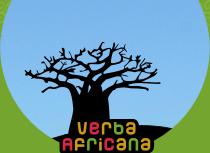Chikocha
This ngoma performance has been chosen because it is representative of one of the main topics discussed in the introduction. This performance, which is, in more specific terms, an initiation ngoma, is native to the southern region of the mainland, but, as seen in the text of the songs (tunaendeleza utamaduni, Watanzania tudumishe utamaduni), it speaks about the national culture of the country. This ‘evolution’ of the ngoma’s choreography depends on the cultural policy adopted after Tanzania's independence, from which consequently followed the cultural politics on the Islands:
“Sehemu ya Mila na Utamaduni itashughulikia kukusanya pamoja mambo yote yanayohusu Mila na Utamaduni wa Mwafrika na kufanya kuwa ndiyo chombo cha kujivunia na kuondoa unyonge iliyosababishwa na Wakoloni waliojaribu kupoteza Mila na Utamaduni wa Mwafrika kwa faida zao binafsi. (Madhumuni ni) kulinda, kusimamia, kuongeza na kulea heshima, adabu na mwenendo wa vijana kwa msingi wa Mila, Utamaduni na silka zetu. [...] Kuwaongoza, kuwafunza na kuwasaidia vijana na watoto wote kuelewa vilivyo, tutokako, tuliko na twendako, kuheshimiana, kuthamini utu wao na nchi yao na kujua juhudi za vijana wenzi wao, wazee wao, chama chao na serikali yao katika kugombea na kujenga taifa huru la Ujamaa lenye heshima na uwezo wa kujitegema.”1
“The Tradition and Culture Section will attend to the collecting of all those activities which refer to African Traditions and Cultures and will make itself the means to be proud and to remove the abjection which allowed the Colonists to try to cancel the African traditions and cultures for their own interest. (The aim is) to protect, to raise, to increase and to teach young people respect, good manners and conduct on the basis of our traditions, our culture and our instincts. [...] To guide, to educate and to help the youth and children our past, where we are from, where we are now and where we’re going, to respect each other, to value their humanity and their country and to recognize the efforts of their companions, their fathers, their party and their government in the creating of the free nation of Ujamaa which has respect and the capability of being self - sufficient.”
The main aim was the creation of a national identity which would replace, or at least cohabit with, the ethnic ones. This meant promoting interests in all aspects of culture and extending the participation to artists from all the communities which together constituted the citizens of Tanzania, wananchi wa Tanzania. This ambitious project involved writers, poets, dancers, singers, musicians and sportsmen: everyone would be employed in building Tanzanian national culture.
The confidence in the potential of the cultural performance did not arise from a personal invention, but from the nature of performance itself and from the social history of the performative genre which, more than any other, showed to be suitable for his project: ngoma performances.
“Participants frequently use these ngoma forms as vehicles to reflect on, or respond to their social and political environments. These ngoma forms are still used for this purpose; the specifics have changed over time depending on people’s expressive needs.”2
The research of a symbolism that might represent Tanzanian national culture was reduced to a choice that turned out in most cases to be limiting: initiation ngoma from some ethnic groups were chosen to be performed, while others were refused, meaning that something chosen to represent a nation was meaningless to many of the people from that nation as they belonged to other traditions.
Moreover, the explicit propagandistic use of performances gave rise to a new artistic creativity that moved in the opposite direction and gave voice to the resentment and the dissent of the groups excluded from participation in the national culture, thus producing a new search for an ethnic identity; an identity that was officially erased to promote the unity of the nation.
As Lange (1995) notes, the consequences of these choices, derived from the conviction of some politicians that every kind of division — ethnic, tribal, regional or class division — is illegitimate, and thus, should be repressed, led to the failure of the Tanzanian Cultural Revolution.
“Tanzania’s cultural policy after Independence did not succeed in establishing a national culture, but the commercial side-effect of the policy grew into a viable urban popular culture.”3
Today in Zanzibar, the National Group of Ngoma Performance also performs ngoma native to the mainland, but in most cases, even if the ngoma themselves refer to specific ritual contexts, the words of the songs still refer to ancient themes. It seems that the evolution in performing ngoma, which implies various influences from the contemporary context (that can come from religion, politics or tourism) does not occur for topics that are reinterpreted and re-proposed in order to satisfy the new contextual needs.

